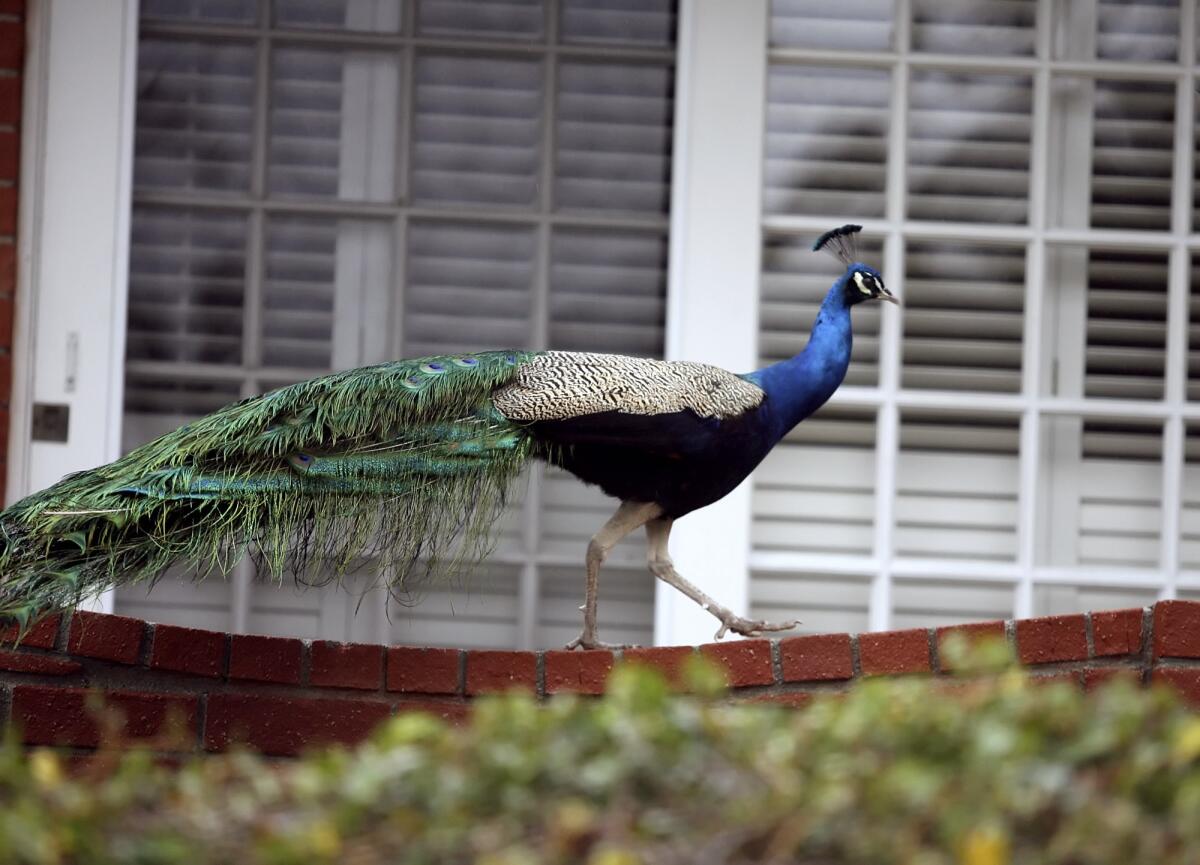Nothing afoul in low bird count, animal keeper says

In 1999, when La Cañada residents in the city’s Highlands area off Angeles Crest Highway got their feathers ruffled over a flock of resident peafowl damaging cars, gardens, lawns and eardrums, city officials sprung into action.
A peafowl management committee convened, consulting with wildlife experts to determine how to effectively regulate the bird population without causing genetic harm.
A humane trapping and relocation method was established to eliminate peacocks and peahens whose numbers pushed flocks beyond the established cap, then set at 18.
“In the past, we’ve tried to make it so there was something like a 2 to 5 ratio of males to females,” said city administrator Kevin Chun. “Over time, because the [City] Council wanted to work both sides [pro- and anti-peafowl] they kept bringing the total flock size down.”
In 2008, the city reduced the amount of allowable birds from 18 to 14, then down to 12 the following year and nine in 2010, where it has since remained.
Meanwhile the annual peafowl census taking continued each winter, deeming the management plan a success as tracked populations decreased from 40 birds in 2008 to 12 last winter.
Now, with one count complete and the other set to finish Friday, census takers are discovering La Cañada’s peafowl population appears to have hit record low levels. As few as seven birds were sighted in the area in late December, while a census trip Wednesday failed to spot a single bird.
“For probably the last five years, we’ve been really close to the (target) number,” said Mike Maxcy, principal animal keeper with the Los Angeles Zoo and an LCF peafowl census taker. “My understanding is that the complaints have dropped off significantly, too.”
The wildlife specialist conducted a three-day census trip between Dec. 29 and 31, spying just two peacocks and five peahens. A separate three-day count, conducted by the Pasadena Humane Society’s field services department, began Wednesday and runs through Friday.
Maxcy said the low population is likely a reflection of successful management, rather than a cause for alarm. The bird is by no means endangered and could easily be repopulated if anyone was interested.
Those who know and love peafowl understand the inherent dichotomy of the magnificent creature. It is known just as much for its inimitable beauty as its shrill cries, profuse excrement and proclivity for robbing gardens of their vegetables, says Dennis Fett, owner of the Iowa-based Peafowl Information Center and a 150-head farm.
“You either hate them or love them,” said Fett, who accepted a clutch of refugee chicks from La Cañada years ago amid a glut and now boasts owning third-generation LCF peafowl.
The birds are creatures of habit and tend to stay where there’s food, Fett added. Problems occur in urban areas when lovers feed the fowl on the sly, unbeknownst to their anti-peafowl neighbors.
Maxcy agrees.
“If you really love them, you tend to feed them, so you’re attracting them,” he said. “And the people who love them live next door to someone who hates them and vice versa — that’s why you get the problems you get.”
